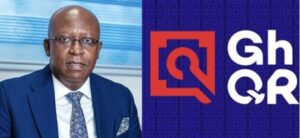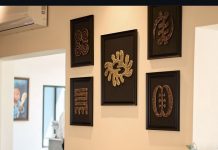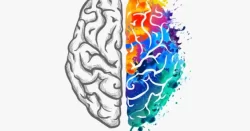At last year’s Mobile World Congress Africa in Kigali, Ghana Interbank Payments and Settlements Systems (GhIPSS) made Ghana proud with its ‘financial inclusion triangle’ – which became the toast of the day during the State of Inclusive Instant Payments (SIIP) in Africa Report launch by AfricaNenda.
GhIPSS’ financial inclusion triangle is basically the effective integration/interoperability between mobile money, banks and ez-wich, which is driving true financial inclusion in the country by ensuring that any and every one can make and receive instant digital payments no matter where they are or what device or platform they use.

At the launch, GhIPSS-CEO Archie Hesse explained that they started by first integrating banks to make them interoperable on the back of the GhIPSS Instant Pay (GIP); then GhIPSS introduced a biometric payment system called e-zwich which was also made interoperable, before moving on integrate the mobile money operators.
“What we then did was to close the triangle by making all the three platforms interoperable to ensure that no matter who is making payment and from wherever, they will be able to do so seamlessly and instantly,” he said.
As if the financial inclusion triangle was not enough, Archie Hesse even wowed everyone some more when he said GhIPSS has since improved the platform by adding other services like Proxy Pay, Internet Gateway Payment, Request to Pay and the Universal QR Code dubbed GHQR which can be linked to both bank accounts and digital wallets, with affordability as the key driving force.
What is a QR Code?
Simply put, a QR Code is a machine-readable code consisting of an array of black and white squares, typically used for storing URLs or other information for reading by the camera on a smartphone. So, unlike the normal point of sale (POS) device, wherein a customer would need to either swipe or insert their payment card and dial a PIN code into the machine and pay, a QR is contactless – you just scan with your normal smartphone camera, follow the prompts on your own phone and pay. This is the system popularly known as SCAN AND PAY.
In Kigali, it was the uniqueness of Ghana’s Universal GHQR – a first of its kind in the world – that really got everyone talking and asking, how did you do it?
This is the one feat that has got central banks, payment platforms managers/regulators and several other industry players across the continent trouping to GhIPSS and asking for their assistance to set up similar systems in their respective countries.
Following engagements with GhIPSS, Kenya has recently launched an exact copycat version of Ghana’s Universal GHQR known as the KE-QR, and is poised to rally all merchants in deploying it across the continent.
Somalia has also recently followed suit and launched an exact copycat version of Ghana’s Universal GHQR, just like Kenya. Recently, AfricaNenda led a team of central bank and payment switches representatives on the continent to Ghana to familiarise themselves with Ghana’s milestones in instant pay infrastructure, including the GHQR.
Interestingly, even Malaysia has picked lessons from Ghana and also launched a Universal QR known as DuitNow QR that is linked to both bank accounts and digital wallets. Malaysia has taken it to a level where all merchant are compelled to roll it out, and they have even integrated with Indonesia and are in the process of integrating it with other countries in that region.
This is when it struck me that very often we in Ghana are served with precious stuff on a silver platter, but we are slow to take advantage of it until someone else takes it, runs with it and begins to enjoy the benefits – then we begin to talk about how we were the first to innovate and how others have adopted something from Ghana and made better use of it.
Universal GHQR has been here with us in Ghana since March 2020 – more than three years. It was made in Ghana by Ghanaians and for Ghanaians. But the adoption has been very slow, and it makes one wonder whether we don’t get it, or we just don’t want it.
Merchants must adopt it
Currently, just about 130,000 merchants in Ghana have adopted and rolled out GHQR as a payment option. The numbers from GhIPSS show that between year 2020 when it was launched, and last year, the adoption and usage has grown exponentially; but there is still a long way to go.
In 2020, the volume of transactions with GHQR was only 904 – and that accounted for a meagre GH¢98,336. But usage shot up significantly to 26,443 in 2021, with the value of transactions crossing GH¢14.7million. Then in 2022 there was gargantuan jump in usage to 958,774 – accounting for about GH¢638.6million in value.
But there is still big room for improvement. The only way Universal GHQR really benefits Ghanaians on a mass scale is for merchants like big and small retail shops, restaurants, food joints, fuel stations, pharmacies, drinking spots, pubs, clubs and more – as well as service providers like hospitals, hairdressing salons, barbering shops, massage parlours, online retailers who take payment on delivery etc. – adopt it and make it a payment option for their customers. There is every reason for merchants to choose GHQR over all other payment channels. There are vast benefits for both merchants and customers.
Affordability
Cost and convenience are two critical factors that can stand in the way of adopting technology. This is why the stakeholders of Ghana’s Universal GHQR have virtually eliminated any cost to both the merchant and consumer.
For instance, a physical point of sale (POS) device costs a minimum of about US$500 – which is about the annual revenue of some small merchants. But generating a Universal GHQR, which is actually a digital/electronic POS, costs absolutely nothing to the merchant. This is where GHQR is ensuring real financial inclusion, because it means even petty-traders like coconut sellers, waatse sellers, table-top vendors and more can generate GHQR Codes and receive payment into their mobile wallets or directly into their bank accounts at absolutely no cost to them.
What’s more, the consumer paying via GHQR also pays absolutely zero service charge. Apart from MTN Ghana, which charges its customers the usual 1 percent for every transaction including GHQR, all the other stakeholders – banks, mobile money wallets and other digital wallets charge the consumer absolutely nothing. They absorb the fee on behalf of consumers because they understand the need to drive adoption of an important channel like the GHQR. It is a shame that a major player like MTN has decided to charge customers for using this channel.
Daily summary of transactions for merchants
Again, some banks have made it possible for payments via GHQR into a merchant’s account or wallet to be summed up into a bulk for the merchant to know exactly how much sales they have made in a day. But data on the individual payments are also available when the merchant wants that data for reconciliation purposes.
Collateral for Loans
It is not a secret that in Ghana it is very difficult for microbusinesses to secure loans for expansion. But a merchant who receives daily payments into his bank account via GHQR can use the cash flow report from those transactions as a basis to get a loan from his banker. Once bankers can see the daily payments a merchant receives, it gives them confidence in the merchant’s ability to repay any loans.
“Physical cash payments are not easy to track, but such digital payments via GHQR can easily be tracked by the bank and qualify such merchants for critical support when necessary. This is indeed another critical financial inclusion opportunity made possible by GHQR,” Archie Hesse said.
How to get a GHQR Code
Merchants can always walk into any bank, particularly to their own, and ask for a GHQR Code and link it to their bank account, mobile wallet or any other digital wallet of their preference. Once that is done, the merchant can either have it on his phone or print it out and display it in the shop or business premises for customers to scan and pay directly into the merchant’s bank account or digital wallet.
Convenience for the consumer
Beyond the general features of a regular QR Code, there is something very unique about Ghana’s Universal GHQR. Apart from scanning and paying, it also comes with a unique merchant code called TERMINAL ID – a set of ten digits, which a consumer who does not have a smartphone to scan the code can dial on his or her feature/yam phone and make payment.
“Indeed, even if you have a smartphone but you find yourself at a place where there is no Internet coverage – or you have run out of data on your phone, you can still use the merchant code (TERMINAL ID) to make payments. So, for instance, if you want to pay with mobile money and you enter your mobile money menu, you will find the GHQR option. Once you select it, it will give you the opportunity to enter a merchant’s GHQR code and pay,” Archie Hesse explained.
Another unique thing about Ghana’s GHQR is that it allows the consumer to take a picture of a merchant’s GHQR Code and save it in a phone’s gallery; from where one can scan the code and pay. The system provides the option to scan from the phone gallery.
Safe and Secure
According to the GhIPSS CEO, the safety feature of it is that whenever one scans to pay, the name of the merchant will pop up so the customer will be sure which merchant he/she is paying to. There is no ambiguity about that at all. He added that the system is designed to know which bank or payment service provider (PSP) generated each GHQR Code; so in case of any dispute it is easy to find where the particular GHQR Code is coming from.
Truly Universal
The Ghana-made Universal GHQR is the only payment channel in Ghana that allow merchants to receive payments from and into all forms of accounts – bank accounts, mobile money wallets and other forms of digital wallets.
The physical POS devices only allow bank card and mobile money wallet payments. In fact, some don’t even receive payments from some mobile money wallets like Zeepay and G-Money; neither do they receive payments from Hubtel, ExpressPay and other digital accounts. But Universal GHQR receives payments from all these platforms.
It is worth repeating that these unique features and obvious benefits of the GHQR are the reason other countries have copied it in toto and are rolling it out with speed and alacrity. It is time for merchants in Ghana to go big with GHQR and start making it a first-choice option for their customers. If not for anything else – for the simple reason that GHQR largely costs both the merchant and customer absolutely nothing to set up and use, it must be adopted widely.
>>>The author is a multiple award-winning telecoms and technology industry journalist, and also the CEO of www.techfocus24.com. He can be reached at [email protected]










